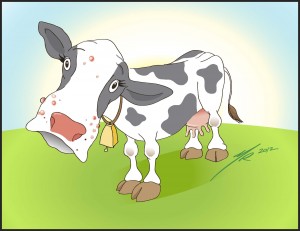Prescription vs Over the Counter (OTC) Acne Treatments
Anyone who has ever suffered from acne breakouts has probably wondered if it’s time to go on prescription acne medication. If you are even thinking about that question, the answer is that it’s most likely time for you to see a dermatologist to discuss prescription treatment options. Once you find that over the counter (OTC) treatments are not performing the way you would like them to, it’s time to book that appointment.
There are many more treatment options for prescription medications than OTC treatments. Prescription acne medications are available in these forms: oral, topical gel, topical cream. The most common oral medications are Tetracycline, Erythromycin, oral contraceptives, Solodyn. The most widely prescribed topical treatments for acne are Differen, Retin-A and Tazorac.
Finding the correct acne prescription treatment is a very personal matter. Only after a dermatologist takes a close look at your skin and medical history will they decide which prescription acne medication is right for you.
Even the mildest acne can be treated effectively with prescription medications and in-office treatments, such as Photodynamic Therapy and the Isolaz acne treatment. Earlier treatment of acne is ideal, as these patients will avoid scarring that can occur with even mild breakouts. Often patients with mild acne can see huge improvement with a simple at-home prescription regimen and maybe a few in-office treatments.


 Our patients always ask us, “Does what I eat cause acne?” The truth is that we don’t know with certainty. For years, it was thought was that diet did not contribute to the formation of acne. However, recent research suggests that certain aspects of your diet may contribute to the formation of acne, particularly in
Our patients always ask us, “Does what I eat cause acne?” The truth is that we don’t know with certainty. For years, it was thought was that diet did not contribute to the formation of acne. However, recent research suggests that certain aspects of your diet may contribute to the formation of acne, particularly in 


 A study published in February, 2012, evaluated the efficacy of a commonly used oral acne medication for topical use. This medication, Spironolactone, has been used off-label for many years to treat acne by taking advantage of its androgen receptor blocking effect. Dr. Schweiger explains that, “Spironolactone is a type of medication called an androgen antagonist. It works by selectively binding to the androgen receptors, so that the androgenic influence is not as strong. Spironolactone is FDA-approved for management of hypertension, or high blood pressure, but is commonly used at lower doses to control hormonally influenced acne in women.”
A study published in February, 2012, evaluated the efficacy of a commonly used oral acne medication for topical use. This medication, Spironolactone, has been used off-label for many years to treat acne by taking advantage of its androgen receptor blocking effect. Dr. Schweiger explains that, “Spironolactone is a type of medication called an androgen antagonist. It works by selectively binding to the androgen receptors, so that the androgenic influence is not as strong. Spironolactone is FDA-approved for management of hypertension, or high blood pressure, but is commonly used at lower doses to control hormonally influenced acne in women.”